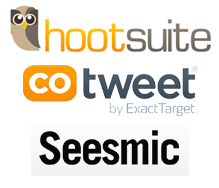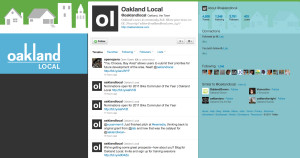Part 1
While many in the industry were initially skeptical about the usefulness of Twitter and its short, 140-character posts, now journalists are using the service to engage their audience, connect with sources and continue building their organization and personal brands.
Twitter’s short format posts are both its greatest strength and its greatest weakness.
The brevity of each post make it an effective way to track trends, get snippets of the most important news and broadcast to large numbers of people simultaneously. However the short form makes it harder to engage in more in-depth conversations. One strategy is to use Twitter to find new users and communities and then direct them to your Facebook page or website for deeper conversations.
Key Twitter Terms to Know
Username (also known as Twitter handle)
Used to identify you on Twitter for replies and mentions. This is created at sign-in. Your Twitter handle is unique and contains fewer than 15 characters.
Tweet, Tweeting, Tweeted
The act of posting a message, often called a “tweet”, on Twitter.
API (Application Programming Interface)
Contains all Twitter data, including tweets and basic user information. This is used by developers to build applications that access and manage tweets, such as TweetDeck.
For more Twitter terms, click here.
Twitter Best Practices
Customizing and managing your Twitter account
First, whatever you do, don’t leave your bio and photo blank. These are two of the main ways people decide whether to follow you. Twitter also allows users to upload a custom background for their profile page in the settings menu. (See the blue and green design in Oakland Local’s)
Programs like Hootsuite and Seesmic are social media management tools that allow several different people to work on the same account. They also give one person the ability to manage multiple accounts, save searches and push content to Twitter, Facebook and several other networks at once.
Use a URL shortener, like Bit.ly or Hootsuite. These tools will give you a short URL that will re-direct users to your original URL, saving you extra characters to use in Tweets. Also, more importantly, shorteners allows you to track the number of clicks on each project, which gives you a better understanding of what types of content is most effective and who is sharing your information.
 When more than one person is managing the account, develop a house style and decide on a general voice for the page. You may want to have each tweeter identify themselves with initials at the end of each post, and you could decide whether you want to speak as one voice, i.e. “We think this is a great story,” or as individuals. Also, determine what subjects are fair game and what is better discussed internally (investigative reports, staff changes, etc).
When more than one person is managing the account, develop a house style and decide on a general voice for the page. You may want to have each tweeter identify themselves with initials at the end of each post, and you could decide whether you want to speak as one voice, i.e. “We think this is a great story,” or as individuals. Also, determine what subjects are fair game and what is better discussed internally (investigative reports, staff changes, etc).
We are not fans of sending any automated messages on Twitter because it’s a medium dependent on conversation, and automated conversations just aren’t fun. And while you can send an automated welcome direct message to new followers, many find it annoying; we recommend you avoid this practice.
Elements of a Twitter page
Twitter is an on-going conversation. More than other social networks, Twitter users prize sharing information and being generous with individual influence.
sharing information and being generous with individual influence.
Accounts that only post information pertaining to themselves are usually less popular than those that distribute varying types of information.
Tweets are approximately the length of a sentence, so consider your wording carefully. Treat your Tweets like a microblog and consider whether your readers would care about something before posting it.
Twitter can be an effective, real-time way to conduct market and demographic research with your audience. Don’t hesitate to ask followers questions and solicit their opinions about new projects.
With this in mind, the 3/3/3/1 rule is an easy way to schedule content. For every 10 tweets, we recommend:
- 3 tweets: Promoting you or your organization’s stories, contests or content.
- 3 tweets: Retweeting or sharing information from your followers or other organizations.
- 3 tweets: Conversational. Ask your followers questions, be an information resource around topics you are expert in.
- 1 tweet: Just for the fun of it. Twitter has several memes and daily themes that allow a more informal way to interact with followers. Some examples include Follow Friday, Music Monday, and Wisdom Wednesdays.
You can set up tools that automatically feed to or from your Twitter account, but this is not advisable as it can appear robotic and proves to be ineffective.
You don’t want a lot of Twitter’s recognized formatting symbols (like @, #, RT) appearing on your Facebook page. And vice versa, your Facebook posts or headlines from an RSS feed may be too wordy to make sense in fewer than 140 characters.
The time an RSS feed saves is usually undone by the lack of authenticity it promotes.
